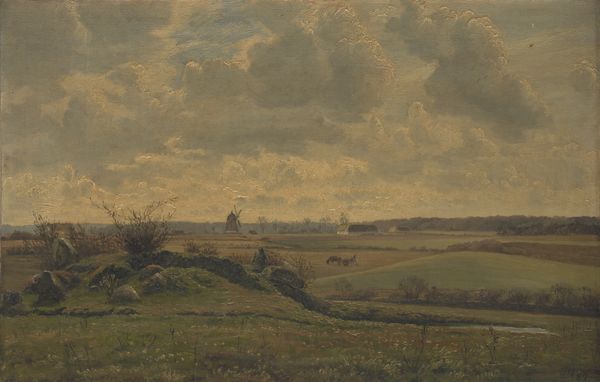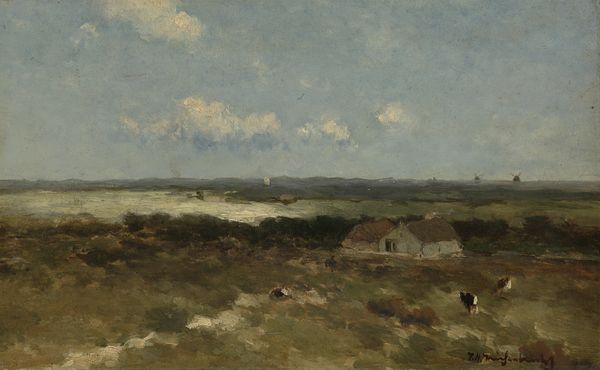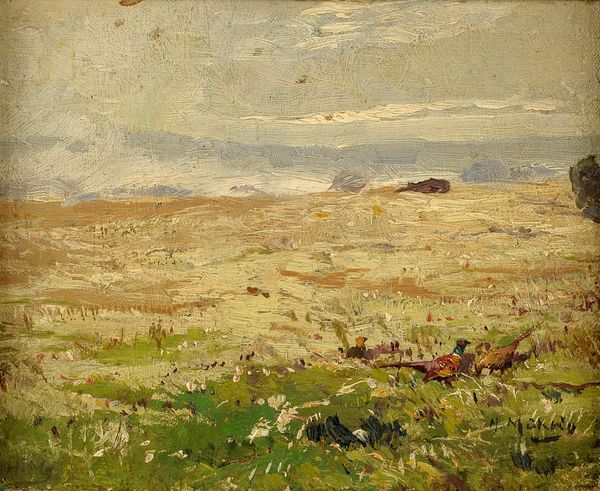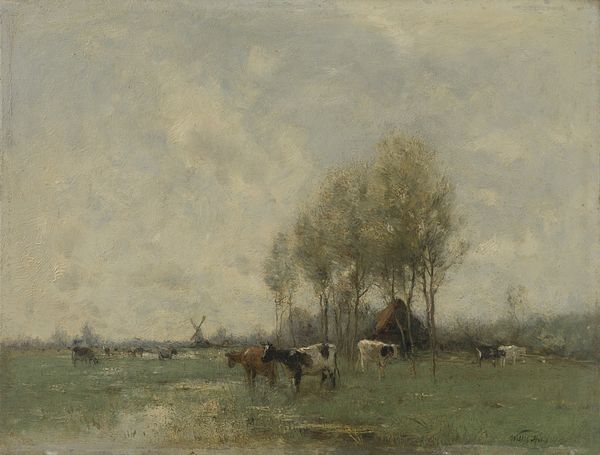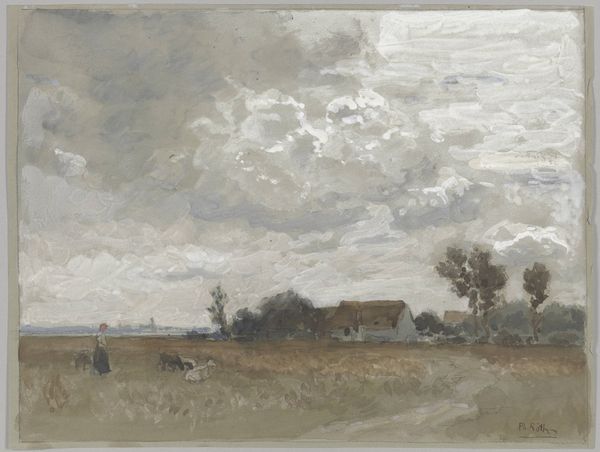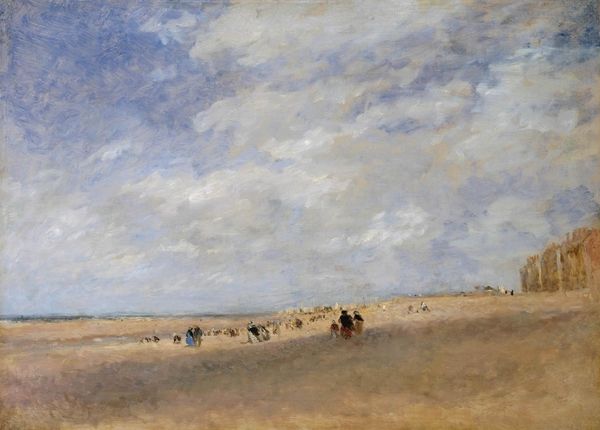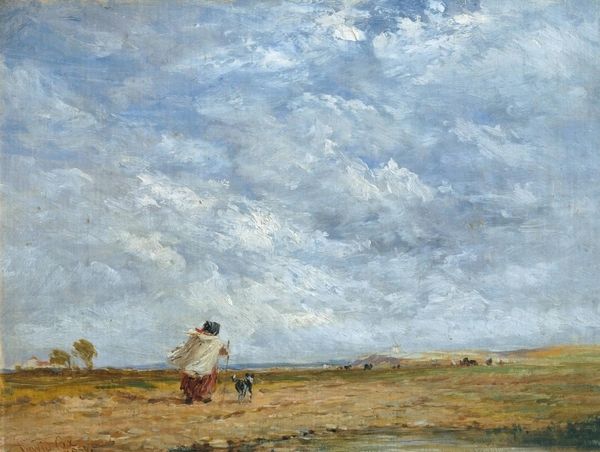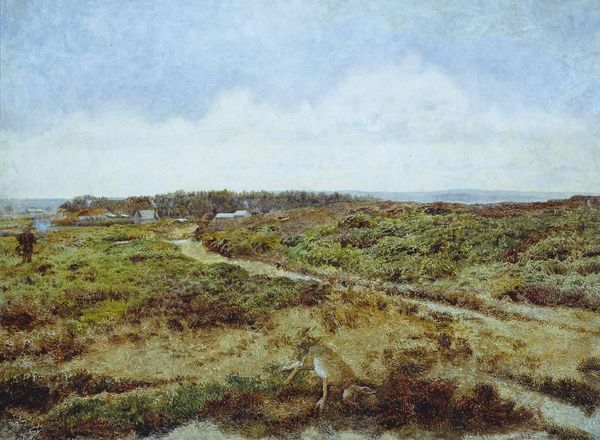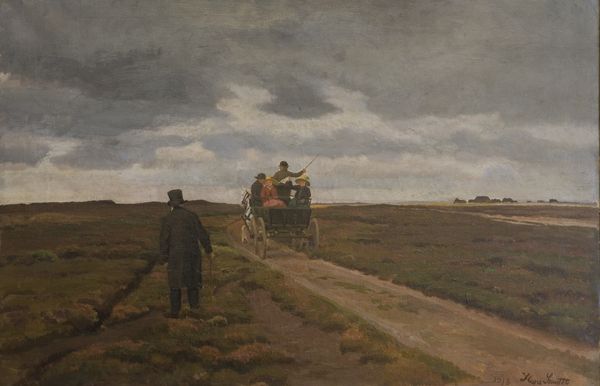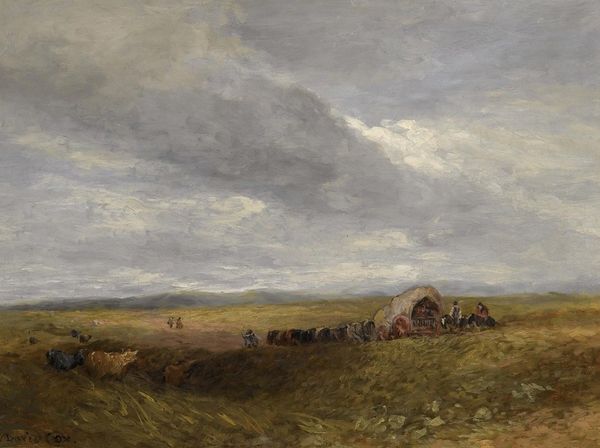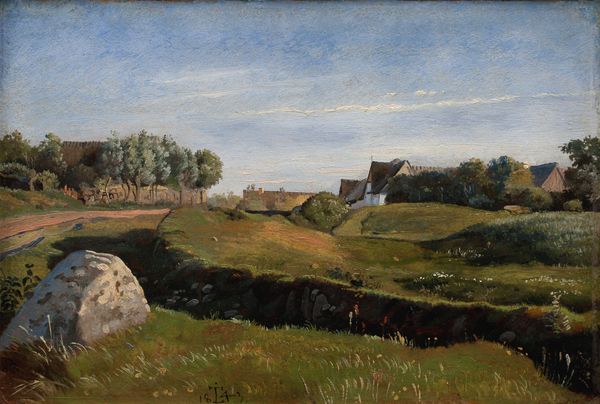
oil-paint
#
oil-paint
#
landscape
#
oil painting
#
genre-painting
#
realism
Copyright: Public domain
Editor: So, this oil painting is titled "Shepherd on the way home in the Hessian landscape," by Hugo Mühlig. The artist's way of handling light makes the scene appear melancholic. What stands out to you most about this piece? Curator: What strikes me is the visual narrative it presents. It seems straightforward: a shepherd, his sheep, a cart in the distance, but look closer. Consider the historical context – genre paintings often romanticized rural life, but was this a reality for most? Editor: That's interesting! I was focused on the surface level depiction of the scene, but now I am wondering how much of that scene really reflects that time's rural reality. Curator: Precisely. This work is seemingly Realist in style but through a contemporary lens we might see it as a commentary, conscious or not, on labor, class, and the idealization of a life that often was far from idyllic. Does it raise any questions about how labor is valued? How rural communities are represented? Editor: Now that you point it out, there is a certain stoicism or detachment. We are left to wonder about the unspoken realities of this community and what those people experienced. Curator: Exactly! And what does that say about our own assumptions when viewing this type of painting? The painting prompts us to consider not only what is shown, but what is deliberately or unconsciously left out. It speaks volumes about the artist’s social perspective and the intended audience. Editor: I didn't anticipate exploring social issues within a rural scene. Now I see this work not just as a landscape, but as a lens through which we examine historical biases and representations. Curator: Art allows us to rethink our past and confront present-day assumptions. That, to me, is where its true power lies.
Comments
No comments
Be the first to comment and join the conversation on the ultimate creative platform.

